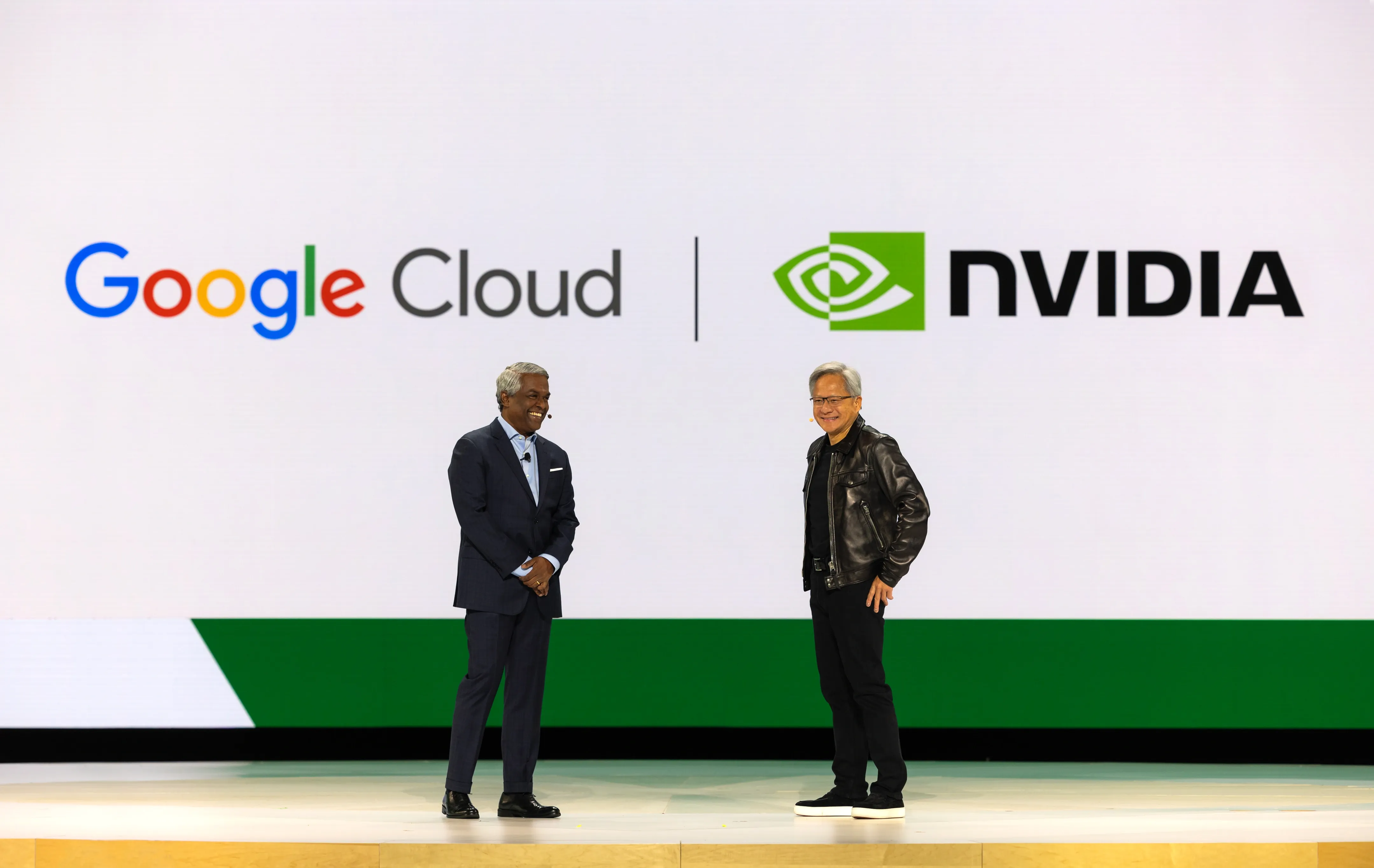Nvidia and Google Unite to Transform AI in the Cloud
Nvidia CEO Jensen Huang announced a groundbreaking collaboration with Google this week, revealing plans to redefine cloud infrastructure for the generative AI era. Addressing thousands of Google partners and customers, Huang emphasized the revolutionary impact of generative AI on the computing stack, highlighting the combined expertise of Nvidia and Google’s world-class computer science teams.
“Generative AI is revolutionizing every layer of the computing stack, and our two companies—with some of the most talented and deep computer science teams in the world—are joining forces to reinvent cloud infrastructure for generative AI,” Huang declared on stage alongside Google Cloud CEO Thomas Kurian at Google Cloud Next 2023.
“We’re re-engineering everything from chips, like the H100 for training and data processing, to model serving with Nvidia L4 GPUs. This overhaul spans processors, systems, networks, and software to accelerate GCP’s Vertex AI and build cutting-edge infrastructure for AI researchers and developers.”

Launching New AI Offerings and Supercomputing Power
During the event, the partnership introduced several innovations aimed at enhancing the development and deployment of large generative AI models. These include integrating Google’s serverless Spark offering with Nvidia GPUs, launching Google A3 VM instances powered by Nvidia H100 Tensor Core GPUs, and optimizing Google’s PaxML for Nvidia-accelerated computing.
PaxML, a collaborative framework for creating extensive large language models, enables developers to leverage Nvidia’s H100 and A100 Tensor Core GPUs for advanced, scalable experimentation.
“We’re reengineering and optimizing the software stack to reinvent software,” Huang explained. “Our collaborative efforts on frameworks like PaxML allow AI researchers to save time, scale up next-generation models, save money, and conserve energy, pushing the boundaries of large language models distributed across vast infrastructures.”
Google Cloud will also be among the first to access the Nvidia DGX GH200 AI supercomputer, powered by the revolutionary Grace Hopper Superchip, to explore its potential for generative AI workloads. “Our teams are building the next-generation processors and AI infrastructure together. This includes the DGX GH200 AI supercomputer, a truly groundbreaking development,” Huang said.
In addition, Nvidia DGX Cloud AI supercomputing and software will soon be available to Google Cloud customers, providing the speed and scale needed for advanced training workloads. “We’re integrating Nvidia DGX Cloud into GCP, benefiting all users instantly,” Huang added.
Google Cloud CEO Thomas Kurian expressed enthusiasm about the strengthened partnership, noting the company’s dedication to offering a wide range of optimized accelerators to meet evolving AI needs. “Google is a platforms company, and we aim to attract developers and customers who appreciate Nvidia’s GPU technology and software,” Kurian stated. “It’s an exceptional partnership.”






